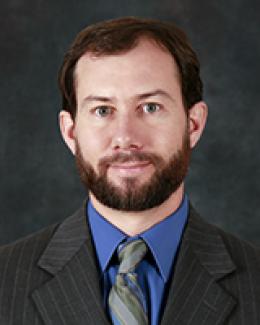Research involving Oak Ridge National Laboratory’s Spallation Neutron Source demonstrates crystal-like heat conduction in a solid-liquid hybrid, AgCrSe2. Credit: Jill Hemman/Oak Ridge National Laboratory, U.S. Dept. of Energy
Research by an international team led by Duke University and the Department of Energy’s Oak Ridge National Laboratory scientists could speed the way to safer rechargeable batteries for consumer electronics such as laptops and cellphones.
The study sheds new light on the atomic dynamics of how silver chromium selenide, part of a class of materials known as superionic conductors, continues to conduct heat even at temperatures that partially dissolve the interior crystal structure while the outer structure remains intact. In a superionic conductor, the atoms in the liquid layer can move as fast as water and still carry an electric charge. The effect of the liquid-solid structure mix on the material properties of heat conduction and superionicity had been long debated.
“Solids and liquids have very different heat conduction mechanisms,” said Jennifer Niedziela, an ORNL staff researcher who worked on the study. “What we were able to show is you still have heat transfer and a stable solid backbone in the system in spite of the presence of strong structural disorder that included a liquid-like layer of silver.”
The team relied on experiments conducted at ORNL’s Spallation Neutron Source, or SNS, and Argonne National Laboratory’s Advanced Photon Source, or APS. Results appeared in the Proceedings of the National Academy of Sciences.
The findings could be used in the race to develop an alternative to the commercial lithium batteries that power most everyday electronics.
“We couldn’t have done this without neutrons and X-rays,” Niedziela said. “That’s what really unlocks everything. Having access to these advanced tools that enable these breakthroughs is really exciting.”
The team was led by Jingxuan Ding, a graduate student at Duke, and Niedziela, then a postdoctoral researcher at ORNL. Olivier Delaire, an associate professor of mechanical engineering and materials science at Duke and former Shull fellow at ORNL, oversaw the study as senior author.
Positively-charged ions move inside a lithium-ion battery via a liquid electrolyte between the battery’s electrodes as electrons flow through the external circuit as electricity. The process works to power devices, but if the battery short-circuits, the liquid electrolytes can heat up, catch fire or explode under the wrong conditions.
“If you stick a screwdriver inside a cellphone, it’s going to get pretty nasty,” Delaire said. “If we could totally get rid of this flammable liquid component and replace it with a solid, we would have a much safer battery.
“And if we can find solid materials in which the ions can move around sufficiently fast, we no longer need the liquid. But this behavior of how ions move about is something that we’ve had really a hard time understanding.”
The experiments focused on heating the crystal structure until its interior silver ions began flowing and hopping back and forth unimpeded at a speed closer to the molecules of a liquid like water. That process slowed down the acoustic phonons – waves of heat energy transmitted by the vibration of the atoms – but didn’t stop them.
“We were able to show the crystal structure remained intact and that the heat conduction supported by the crystal remained robust, allowing for heat dissipation.” Niedziela said.
“There was a debate in the scientific literature about how well these heat-transfer mechanisms persisted under these circumstances. It was thought that by the silver becoming totally diffusive, like a liquid, you would significantly reduce the ability to transfer heat.
“But actually, the diffusion of the silver is so slow, the heat wave gets there, sees the silver atom and keeps going. The silver atoms are hopping too slowly and the heat waves are moving too fast.”
The team used ORNL’s Cold Neutron Chopper Spectrometer and Wide Angular-Range Chopper Spectrometer at the SNS and X-ray scattering at the High-Resolution Inelastic X-ray Spectrometer at the APS to get an up-close look at the ions as they flowed. High-speed computers at the National Energy Research Scientific Computing Center helped analyze the results.
“We get a lot of pretty data from the neutron and X-ray measurements, but it can be a challenge to wrap your head around what you’re seeing,” Delaire said.
Superionic conductors with robust heat transfer properties could provide avenues for next-generation transportable power sources, such as laptop batteries less likely to explode.
“When you replace silver with sodium, for example, it also undergoes this transition where the sodium ions become liquid-like under heat,” Delaire said. “We need to understand at a deeper level the atoms inside these materials and the way they jump around. Those materials could enable this next generation of batteries.”
Researchers expect more opportunities for discoveries to open up once the Second Target Station becomes operational at the SNS.
“We’ll be able to look at much smaller samples and can get an even closer look,” Delaire said.
Co-authors of the study, “Anharmonic lattice dynamics and superionic transition in AgCrSe2,” included Jennifer L. Niedziela, Andrew F. May and Georg Ehlers of ORNL; Douglas L. Abernathy of ORNL and Duke University; and Jingxuan Ding, Dipanshu Bansal, Jiuling Wang, Xing He, Ayman Said, Ahmet Alatas, Yang Ren, Gaurav Arya and Olivier Delaire, all of Duke.
The research was supported by the DOE’s Office of Science. SNS, APS and NERSC are DOE Office of Science user facilities.
UT-Battelle manages ORNL for the DOE’s Office of Science. The Office of Science is the single largest supporter of basic research in the physical sciences in the U.S. and is working to address some of the most pressing challenges of our time. For more information, please visit energy.gov/science. — Matt Lakin






